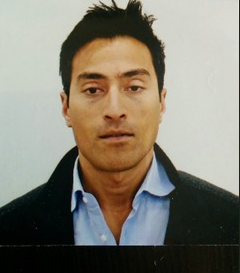Why Non-Vascular Interventional Radiology Matters: Dr. Andrew Gomes Weighs In
Why Non-Vascular Interventional Radiology Matters: Dr. Andrew Gomes Weighs In
Blog Article

The Growing Concern of Diagnostic Accuracy in Neurology
Exact diagnosis is at the heart of successful medical treatment, yet neurological conditions stay notoriously hard to recognize with precision. Problems such as for example painful mind accidents (TBI), Alzheimer's condition, and multiple sclerosis often present with overlapping indicators, increasing the risk of misdiagnosis. That is where advanced imaging practices, like Diffusion Tensor Imaging (DTI), perform a transformative role. Specialists in diagnostic radiology, including Dr. Andrew Gomes Sugar land tx, use DTI to road head task and mobile disruptions with unprecedented accuracy.
Leveraging the Power of DTI Engineering
Diffusion Tensor Imaging (DTI) evaluates the motion of water molecules in head structure, providing detail by detail visualizations of white subject tracts. That amount of insight assists radiologists detect also the smallest structural abnormalities in the brain, giving important information for early diagnosis and designed treatments. Non-vascular interventional radiologists are distinctively situated to utilize this engineering, performing minimally unpleasant imaging techniques to gain a further knowledge of neurological conditions. Dr. Andrew Gomes views this as a game-changing instrument in the fight misdiagnosis.
Data-Driven Diagnostic Idea
Dr. Gomes emphasizes a data-driven method of radiology, advocating for the utilization of sophisticated imaging systems like DTI to reduce diagnostic uncertainty. By meticulously examining patient information, Dr. Gomes assures that every examination is backed by objective, science-based evidence. He also shows the possibility of adding DTI effects with synthetic intelligence programs to help expand refine diagnostic accuracy. His responsibility to innovation and patient-centered treatment continues to shape the continuing future of diagnostic and non-vascular interventional radiology.
Connecting Technology and Patient-Centric Treatment
The integration of sophisticated neuroimaging tools like DTI not merely promotes the accuracy of diagnoses but also empowers healthcare providers to supply more accurate, patient-focused treatments. By finding abnormalities early, radiologists play an essential role in increasing outcomes and minimizing the burden of neurological diseases. Specialists like Dr. Andrew Gomes remain at the front of radiological breakthroughs, ensuring engineering is used to its fullest possible in the constant quest to battle misdiagnosis and raise individual care. Report this page